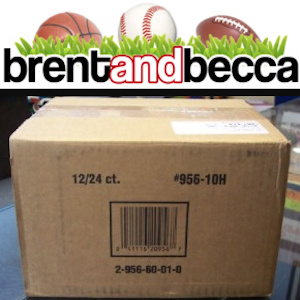
10 Steps to a Successful Sports Card Case Break
Every day, people ask me questions about breaking cases of cards. To help answer some of them, I've prepared this step-by-step guide. For those thinking about using it to get started breaking cases of their own, go for it. However, I also want to share my processes, time frames, and opinions based on my personal experiences.
Things have changed over the years and I have become more efficient. For example, because a lot of products have similar configurations from year to year, I don't have to study sets as much anymore as I know what to expect. For any newer case breaker, finding a niche, building a customer base, and product and market research are huge keys, but that is for another time. For now, I'll focus strictly on the planning and busting that goes into a case break.
Top Steps for Your Sports Card Case Break
Step 1. Ordering the Product
Once you find a product you like and want to break, then make an order. Simple, right? It can be. But first, you have to make sure you order from a reputable distributor and build a relationship with them. Call them and tell them about your plans and model. See if they are the right fit for you, and then continue working with them on future releases. Moreover, decide how many cases you are looking to buy. Each product is different, so each should have a different set of goals.
Here are some questions to consider as you get your first orders ready:
- How many customers do you have that may want things from the product?
- What avenues are you going to sell?
- Are you an online retailer? If so, do you use your own website, eBay or email to sell?
- Do you have a shop?
- Are you going to set up shows?
One issue some beginners have is that they think they need to order large quantities of product to do well. Not true. If you over-order, then you may be stuck with too much inventory and prices can drop fast. If you can't move everything (except what you hold as a future investment in the case of prospect products) within a week or so of release, then you may have ordered too much. Starting with smaller quantities prepares you for larger amounts in the future. It also helps you build your customer base and experience. It will also help you decide the number of cases you need to put together the tougher insert or parallel sets that have higher returns in set form.
Step 2. Presales
If you're selling online, to maximize returns, you should be pre-selling some of your product. I would even suggest you could do it in a brick-and-mortar shop, but probably not at card shows. The best things to sell in advance are sets as you do not know what hits you're going to pull. But you could work out deals on certain teams or players.
I used to begin pre-selling sets on eBay a week or two before release. Now, I start three or four weeks early due to the number of volume breakers and those that need money to pay for the product. In general, this has hurt prices because the demand is not as heavy because there's lots of supply early on. This tends to make prices fall before the product is released. By the time launch week rolls around, when the demand is greatest, the market has softened because many have pre-bought and the market prices have dipped. Prices usually rebound, but not quite to pre-sell levels.
Also, avoid listing more than, say, two of each set, maybe one for three days and one for seven days. Remember, the traffic for pre-sells is not as high. If you list five to ten of something, it only creates more supply. When you have 10 to 30 sellers doing the same thing, watch out (2009 Allen & Ginter rings a big bell). Unless eBay is running a promotion, I will wait until one sells or ends before listing another. Even then, that can be overdone just to save $1-$2. You can end up losing far more in the selling price.
I would prefer to go back to shorter pre-sell time frames. With longer presales, products tend to run together, leaving more to keep up with. One way I began to counter this trend was by pre-selling through my loyal customers. I would offer them straight deals through email and knock the price down just a touch. Even if they paid a bit more, in the end, they appreciated my service and knew I would deliver. Over 80 percent of my pre-sells are done off eBay. Now, over 70 percent of my total sets are sold without using eBay. Many customers will contact me first or pay early but I typically email customers about three weeks in advance to take their order. I then collect money once the product is released.
Step 3. Getting Ready
If time allows, it is good to get on eBay's Turbolister program (no longer available to download) and get some listings ready before the product arrives. I try to do this three to seven days in advance. If you are breaking smaller quantities, this is not necessary and probably a waste of time. But for me, it's a necessity so I can spend more time breaking the product when it arrives. I get the most up-to-date checklist and create listings in Turbolister with titles and descriptions of all the basic hits and inserts I expect to find. When I do pull something, I just have to add a picture and it's good to go.
This also helps with pricing. If you are not sure what to price something at, you can do a little research and base it off sales from past releases. Terapeak is a great resource if you are unsure where to put prices. It's a subscription-based site that offers months of eBay sales data.
You can also get pricing help by asking another case breaker. We're generally a friendly lot. The last thing you want to do is undervalue a card.
It is also good to check on supplies you're going to need for shipping and make sure you have enough. I also want to clear space and make card boxes so that they are ready to be filled once the product arrives and wrappers begin to fly.
Bonus Tip: Do yourself a favor and do not have other auctions running or ending right before a release. This will create a headache of double work. You can't ship cards and monitor those auctions while trying to rip and sell all the new stuff. The more time you can spend listing, the better. That is what results in sales.
Step 4. Let the Ripping Begin!
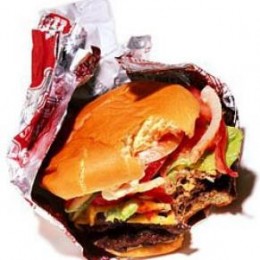 When the product comes in, the time for eating and sleeping is over. I have been blessed to be able to schedule time off of work for usually three days during a release week. I saved a lot of vacation time up and it has been a blessing. If you are doing small quantities, time off work will not be needed. However, to be most effective with 10 or more cases, you will need time. I do have some help as I will expand upon, but not as much as you might think. I am still able to turn around dozens of cases in short periods of time.
When the product comes in, the time for eating and sleeping is over. I have been blessed to be able to schedule time off of work for usually three days during a release week. I saved a lot of vacation time up and it has been a blessing. If you are doing small quantities, time off work will not be needed. However, to be most effective with 10 or more cases, you will need time. I do have some help as I will expand upon, but not as much as you might think. I am still able to turn around dozens of cases in short periods of time.
I try to open boxes until 5 or 6 PM. My wife usually arrives home around 6 and, after taking care of the kids and bringing me a fast food dinner, she takes over the ripping while I begin to scan pictures.
I hate scanning the most as there is little reward and it eats up so much time. But at least I get to see the hits at this point. After trying many ways, I have trimmed down the time with various programs. No matter how much time it might save, I do not like using pictures of cards taken with digital cameras.
I also have another friend that usually comes over around 7:30-8 PM and helps open packs. I could not do the volume I do without the two of them helping me open and, later, sort. I try to have everything opened in one day even if I am up alone until 2 or 3 AM when the TV stations are signing off for the night. Some products, like Topps Heritage, are longer and take me two days to open.
Many have asked me how I open packs so quickly. Thankfully, Topps jumbos are the easiest boxes to open and the cases are small. For most products, I learn where the hits are and pull them out. I do open every pack. For some products, there is only the hit, but for others, there are inserts too. For example, with base Topps, I pull out the middle goodies. I am only interested in what I need to scan and list at this point. Once I am done listing for the night, I go back through any piles that have not been sorted and sort by base or insert type.
Step 5. Listing and Pricing on eBay
 This is an area that takes a lot of practice and experience. I try to begin listing around 8 PM EST, sometimes earlier. Even though I found my biggest successes are between 9 and 11 PM EST, I will list up until midnight. Before I submit auctions, I check eBay and make sure someone else has not listed the same item too recently. If possible, I do not want to be ending within 15 or 30 minutes around them. On bigger, more rare items, I want to end hours, if not days, apart.
This is an area that takes a lot of practice and experience. I try to begin listing around 8 PM EST, sometimes earlier. Even though I found my biggest successes are between 9 and 11 PM EST, I will list up until midnight. Before I submit auctions, I check eBay and make sure someone else has not listed the same item too recently. If possible, I do not want to be ending within 15 or 30 minutes around them. On bigger, more rare items, I want to end hours, if not days, apart.
Often I will have multiples of the same card. If it is a common jersey or autograph, I will list in two or three rounds spaced about 90 to 120 minutes apart. I don't want to compete with you and I definitely don't want to compete with myself. This is an error that some make by listing everything at the same time, even if that means 10 of the same thing. It's good to space things out, and even wait until the next day to list more. If you don't, you will compete against yourself and create a much lower market value going forward on your other cards as well.
Typically I know what prices should be and I tend to start a bit higher as I want to help establish a market. Plus I know that early auctions tend to go for more. By having so many listings, buyers may be willing to pay more to bundle items. I want to be fair as well, otherwise you run people off.
Undercutting happens. It is a part of the business. But unless someone else's prices are crazy high, I would suggest sticking close together and monitor and adjust as the market does. I study the market daily and adjust accordingly, usually once a day but typically only on sets and not hits.
I used to use "Buy It Now" a lot as I had many customers that wanted that option. With so many auctions and breakers, it has become less effective on release week unless it's for higher-priced items. Typically I will list a round of jerseys or autographs and let them ride. Then, in my later rounds, I will add Buy It Now to the duplicate items. This helps cater to more potential customers and may take some competing items off the listings.
The common items I list for a day at a time. I continue this for two or three days until I run out. I will also relist them as they sell if I have more. The more rare cards I list for three to five days, depending on how tough and how hot the item should be, plus what night it will end.
I also like to list the tougher parallel or insert sets for longer. Too often I have seen tough sets priced very low or adjusted multiple times a day because they haven't received a bid. Not only does it take a special few buyers to search it out, but many people also wait to bid or use a sniping program, and they may be waiting to see if you will adjust the price. Wait until the item sells or another similar card sells to adjust pricing, unless you feel you priced too high to begin with. These more rare items or tough sets should also be considered for Fixed-Priced listings. If it is a rare card, why not? It does not hurt you. You do not have to move it too soon. Try Fixed-Priced first, then do an Auction-Style if you choose.
The second day of listings I begin to research completed auctions of mine and others before submitting more. I want to see how the market is receiving the items. If I decide to go with a Buy It Now option this time, I list it slightly higher than what it went for last or on average. I also list another round of duplicate items but base them off of my previous day's results. I try to have all hits up on eBay within the first 72 hours of release unless I have massive duplicates. Sets take much longer as they need to be spread out, but that is good because you will need to be shipping and sorting as you go.
Much more could be said here, but ultimately do what you think is right. There are many questions as to when to list, or what days to end, or pricing, whether to end auctions early, etc. Everyone has an opinion. All I suggest is know the market.
Step 6. Sorting
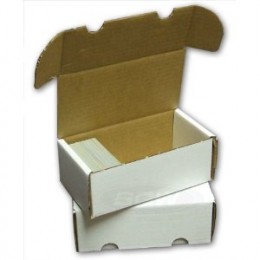 Here is where helpers really come in handy for me. If the product is simple enough I, along with my helpers, will sort each card by type (base, insert, parallel, etc) during the first two days. While I spend most of my time scanning and listing the first 72 hours, they begin to sort the inserts so that I can start seeing how many of each set I have. This way I can trade with others or list more if I can.
Here is where helpers really come in handy for me. If the product is simple enough I, along with my helpers, will sort each card by type (base, insert, parallel, etc) during the first two days. While I spend most of my time scanning and listing the first 72 hours, they begin to sort the inserts so that I can start seeing how many of each set I have. This way I can trade with others or list more if I can.
On day three, or four at the latest, base cards begin to be sorted. We used to sort by 100s and then 10s and then 1s, for years, but now we sort by 10s and then 1s. It still takes a while but skips a step and we don't have to touch the cards an additional time. You have to have space and it's easier to do with more than one person. On something like base Topps, one person sorts 1-199 while another 200-330 in groups of 10. Then when I join in, it really speeds up.
I initially set out to make however many sets I sold in advance through eBay or direct email sales of quantities of three or less sets. Usually we try to make 50 to 100 sets the first weekend. Then, the next week we move onto the large 50-, 100-, 200-set orders, one at a time. After the cards are organized into singles, we sort the sets all face-up so we can visually see that it is the correct card. We can also make sure no variations or short prints get mixed in. This is very important for me as my helpers do not know all the short prints or variations. It also ensures the most accurate complete set we can put together.
All sets should be sorted within an 18-day window. So if release is on a Wednesday, then I hope we are done in 2 1/2 weeks on that Sunday. I have deadlines and must get ready for the next release. This means some very long days, especially when you factor in 100s of emails and 1000s of shipments. Also, if I sold team sets, those are broken down immediately for shipment.
Step 7. Trading
This is an ongoing process for about a week during listing, sorting, and shipping with inserts and parallels. I do it again a couple weeks later with base cards. I have a network of case breakers that I trade with, then later with visit sportlots.com for whatever else I may need.
Step 8. Shipping
 If the release day is on Wednesday, I start shipping the first cards on Friday. At this point, I can only ship single cards, inserts, and team sets because base sets are not ready. I will ship again Saturday. Sunday evening is when the first batch of set orders has to be ready to move out. This means that Friday night, Saturday, and Sunday are all spent sorting those initial 50-100 sets into boxes for shipping late Sunday night. Then, I ship every night from there.
If the release day is on Wednesday, I start shipping the first cards on Friday. At this point, I can only ship single cards, inserts, and team sets because base sets are not ready. I will ship again Saturday. Sunday evening is when the first batch of set orders has to be ready to move out. This means that Friday night, Saturday, and Sunday are all spent sorting those initial 50-100 sets into boxes for shipping late Sunday night. Then, I ship every night from there.
It usually takes me hours each day to ship, and I try to ship everything paid the day before. My wife and friend help as well. I print the labels through multi-label shipping on Paypal, then put the card with the label. My wife will put the card in the package and stick the label on. My friend will help boxing the sets and larger orders.
We usually begin each night sorting (I will list if still needed), and then end it shipping for 3-4 hours. Sometimes we rotate nights where one night is sorting sets and shipping singles, and the next night is boxing and shipping singles and sets. That second weekend, we ship out the larger orders of three to 50 sets if they have not been shipped already (most smaller orders of 10 or less have been during the week). The next week is dedicated to the massive orders of 100-200 sets so that they can be out by the third weekend at the latest.
Step 9. Following Up on Orders
Sometimes mistakes happen. A card is missing, packages get lost or even damaged. I do everything I can to make it right and do so quickly. I also email my direct customers and let them know when items shipped and then ask if they were pleased.
This is a very important thing for me to be available and deliver the best service I can. While 99.9% of all transactions run smoothly, you can not please everyone. I still try. It can make the difference for you too!
Step 10. Tracking
Finally, this all-important step actually starts at the beginning. I keep detailed records and Excel spreadsheets on everything. I break down each product so I know how it's performing. I have a main spreadsheet that tracks costs (cases, shipping, eBay fees, Paypal fees, shipping supplies, card supplies, extra cards purchased to complete sets, refunds, and more) and revenue (direct sales, eBay sales, shipping, and even my 1% cash back on my Discover card or 1.5% cash back on my Paypal Debit Card). Then I have another sheet designed to track direct orders and where I am at on them. I put all of this info into a monthly P/L sheet that I use for taxes and to match up with eBay, Paypal, and credit card statements. This step can be very time-consuming, yet I enjoy it a lot.
Conclusion
Once it is live, each release is usually a two- to three-week process for me. But, as you see, there is much more time that goes into each product before and after it goes live. I typically go to bed very late and can spend 250 or more hours on a release. And that doesn't count the valuable time of my two wonderful helpers.
There are other things that take time, such as tweeting, taking quick pictures, answering emails and requests, writing up results and reviews, and just life in general. I do get tired sometimes and it can build up stress, but I absolutely love and enjoy busting cases.
If I ever stop, it won't be because I don't enjoy it. It will be because of family and time. Life is very precious and I spend a good deal of it on cards. Thankfully, my family supports me and helps me where they can. Many hobbies or careers take time away from what is important in life too, but this is something we can be happy doing at home together.
There are many ways to skin this cat. This guide is meant to be simply a summary of how I do it, along with a few tips that helped me. I hope you found it beneficial in some way and even to take a couple things from it. Whether cards are a hobby or a business for you, craft it and enjoy it. If it is one box or multiple cases, a couple hours or weeks with no sleep and lots of fast food, if it is alone or with others, even if it is a hockey product where you get to learn how to spell some fun names, the hobby is meant to be fun!
Good luck with your breaks and enjoy!
Shop with Brentandbecca:
 | Making purchases through affiliate links can earn the site a commission |























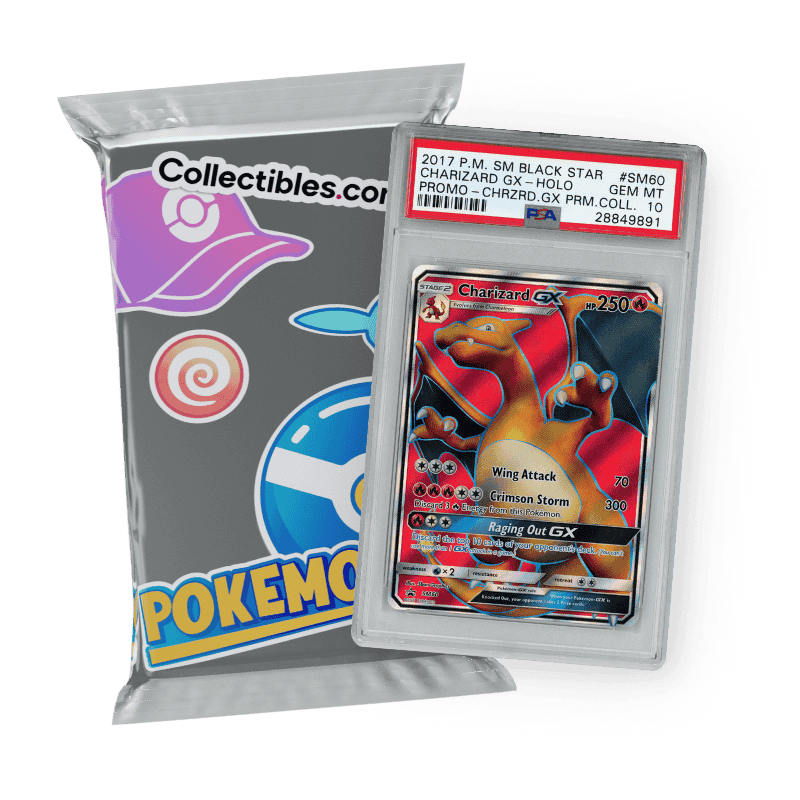






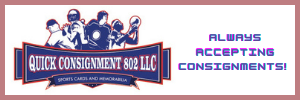
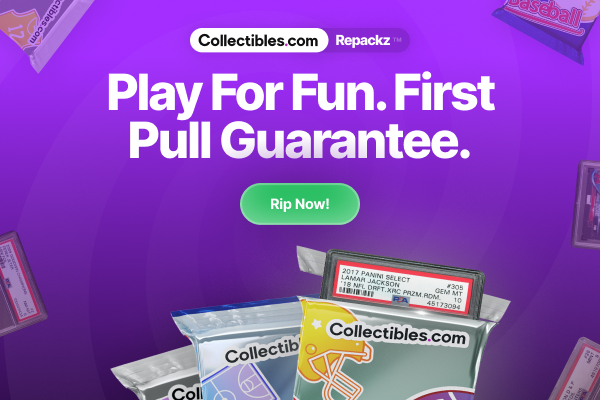
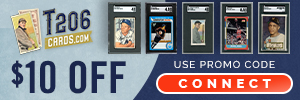
David Swiezak
So I paid 65 dollars for a 5 box Topps Dynasty, there was 45 other people in the break. So I got nothing for my money.
I didnt know that it worked that way but now i do